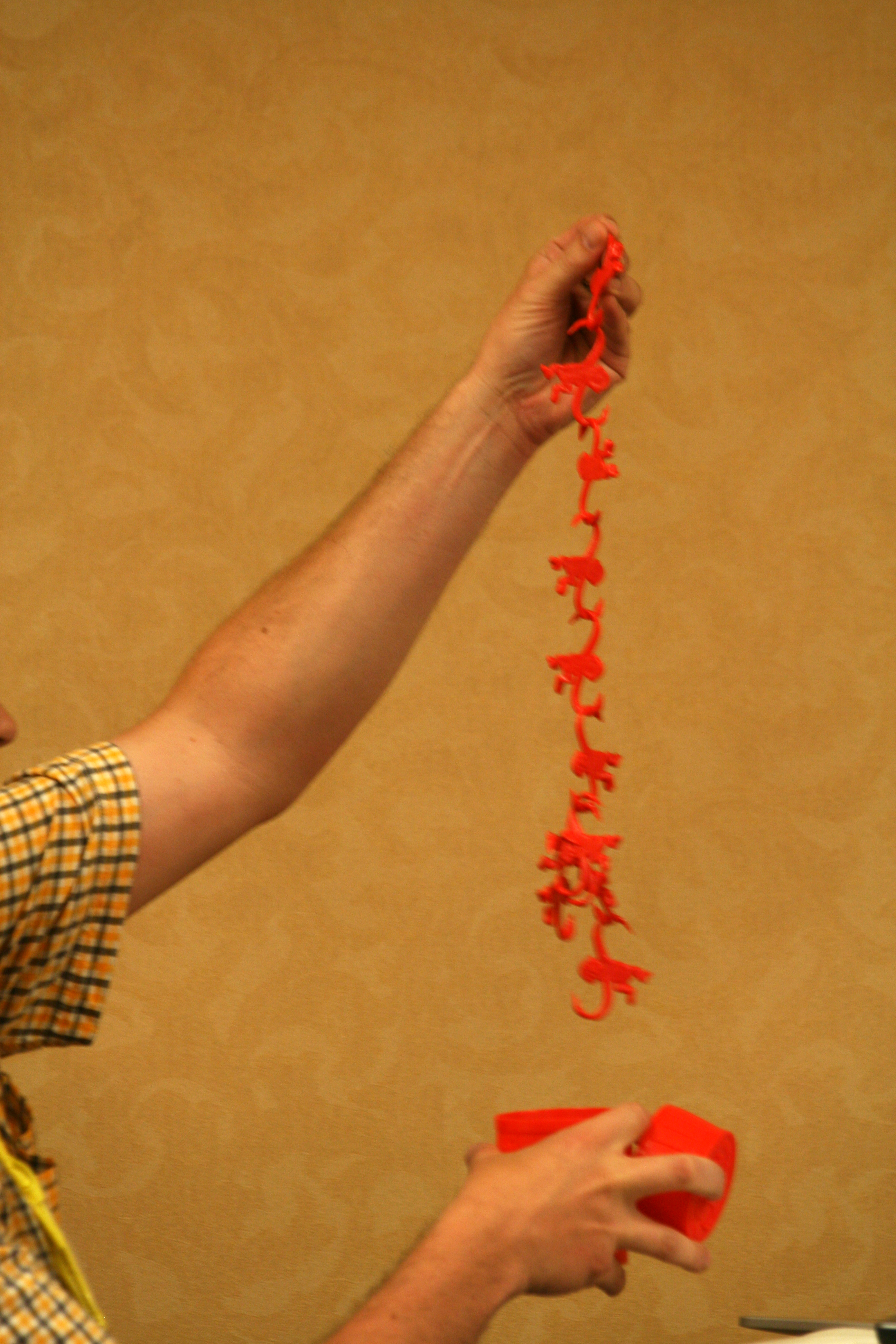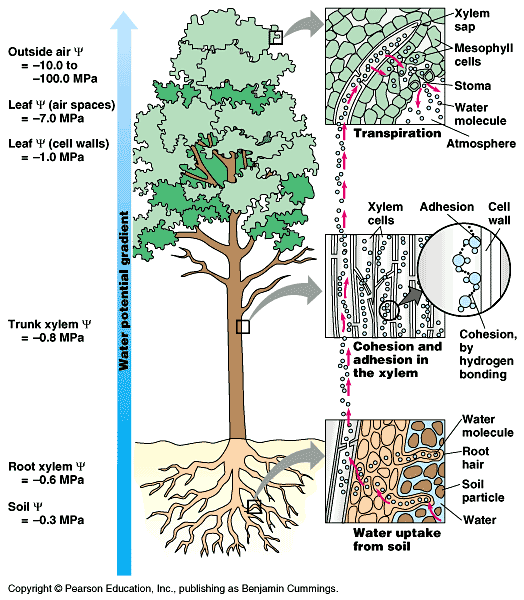Water flows downhill. It flows from where there is a lot of water to where there isn't a lot of water. We have seen that water will flow into a cell as long as the solute concentration of the cell is higher than the external environment. We call this cell hypertonic to its' hypotonic environment. We say that the water potential of the cell is lower (or more negative) than the environment. To put it in terms of water potential, water flows from high to low water potential.
Since we are talking about pulling water, we need to start where the water will be pulled from.
Leaves have openings in them called stomata which are created by two cells called guard cells (shown above). Plants can adjust these openings so that they are wide open, partly open or even tightly closed (more on the mechanism later). Most stomata are on the undersides of leaves. Gases including carbon dioxide, oxygen and water vapor are exchanged through the stomata.
 |
| Leaf SEM |
 |
| Leaf cross section (light microscope) |
Wood is xylem. Water travels in a continuous fashion from the spongy mesophyll all the way down the plant stem in the xylem. Each water molecule hydrogen bonds to the ones around (and below) them--this is cohesion. When one molecule evaporates into the air space in the leaf, other molecules are pulled up to take its place. Because they are all connected, each water molecule pulls on the one below it, much like in the game barrel of monkeys.
 |
| Cohesion of water is like a barrel of monkeys. |
Water flows into the air from the plant because there is less water there--the water potential is lower. Depending on the humidity, air may be between -10 and -100 MPa. As we move into the stomatal cavity, humidity goes up and water potential also becomes closer to zero (higher). As long as the water potential is progressively higher as we go down the tree to the root, water will continue to flow from the roots up the stem to the leaf and out the stomata.
Remember that life is in a dynamic state of disequilibrium. As the soil drys out, the plant will do things to conserve water and to maintain its internal water potential lower than the soil. At some point this will be impossible and the plant.
What factors do you suppose affect the rate of transpiration (the loss of water from a leaf surface)? How could you measure transpiration? How would you design an experiment to test the effect of one of these factors?



No comments:
Post a Comment